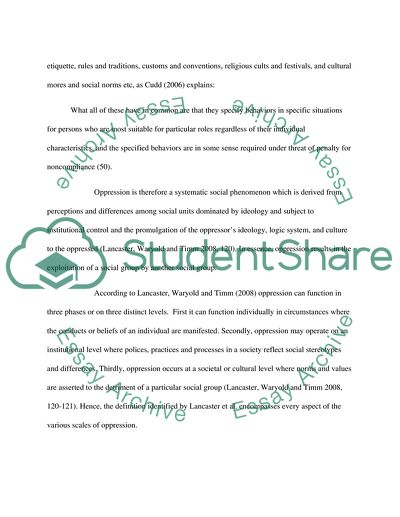Cite this document
(“Oppression and Social Work Essay Example | Topics and Well Written Essays - 2500 words”, n.d.)
Oppression and Social Work Essay Example | Topics and Well Written Essays - 2500 words. Retrieved from https://studentshare.org/sociology/1568948-oppression-and-social-work
Oppression and Social Work Essay Example | Topics and Well Written Essays - 2500 words. Retrieved from https://studentshare.org/sociology/1568948-oppression-and-social-work
(Oppression and Social Work Essay Example | Topics and Well Written Essays - 2500 Words)
Oppression and Social Work Essay Example | Topics and Well Written Essays - 2500 Words. https://studentshare.org/sociology/1568948-oppression-and-social-work.
Oppression and Social Work Essay Example | Topics and Well Written Essays - 2500 Words. https://studentshare.org/sociology/1568948-oppression-and-social-work.
“Oppression and Social Work Essay Example | Topics and Well Written Essays - 2500 Words”, n.d. https://studentshare.org/sociology/1568948-oppression-and-social-work.


